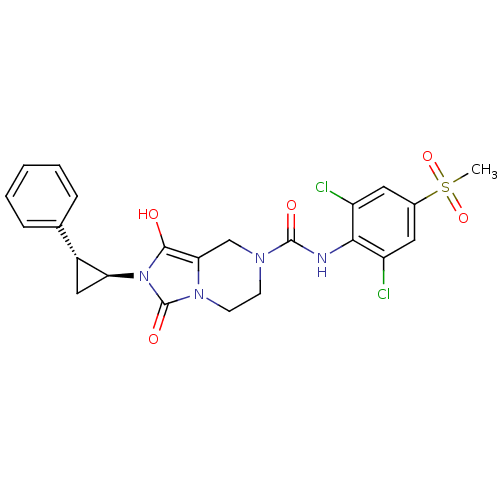Affinity DataIC50: 41nMAssay Description:Antagonist activity at smoothened expressed in mouse Shh Light2 cells assessed as inhibition of purmorphamine- induced Gli-dependent luciferase gene ...More data for this Ligand-Target Pair
Affinity DataIC50: 42nMAssay Description:Displacement of BODIPY-cyclopamine from human Smo expressed in HEK293 cells in presence of 2% fetal calf serumMore data for this Ligand-Target Pair
Affinity DataIC50: 53nMAssay Description:Antagonist activity at smoothened expressed in mouse Shh Light2 cells co-expressing Gli-dependent reporter gene assessed as inhibition of Hh pathwayMore data for this Ligand-Target Pair
Affinity DataIC50: 68nMAssay Description:Displacement of BODIPY-cyclopamine from human Smo expressed in HEK293 cells in presence of 20% normal human serumMore data for this Ligand-Target Pair
Affinity DataIC50: 77nMAssay Description:Displacement of [125I]-PA cyclopamine from smoothened expressed in african green monkey COS-1 cells after 10 mins by autoradiographyMore data for this Ligand-Target Pair

